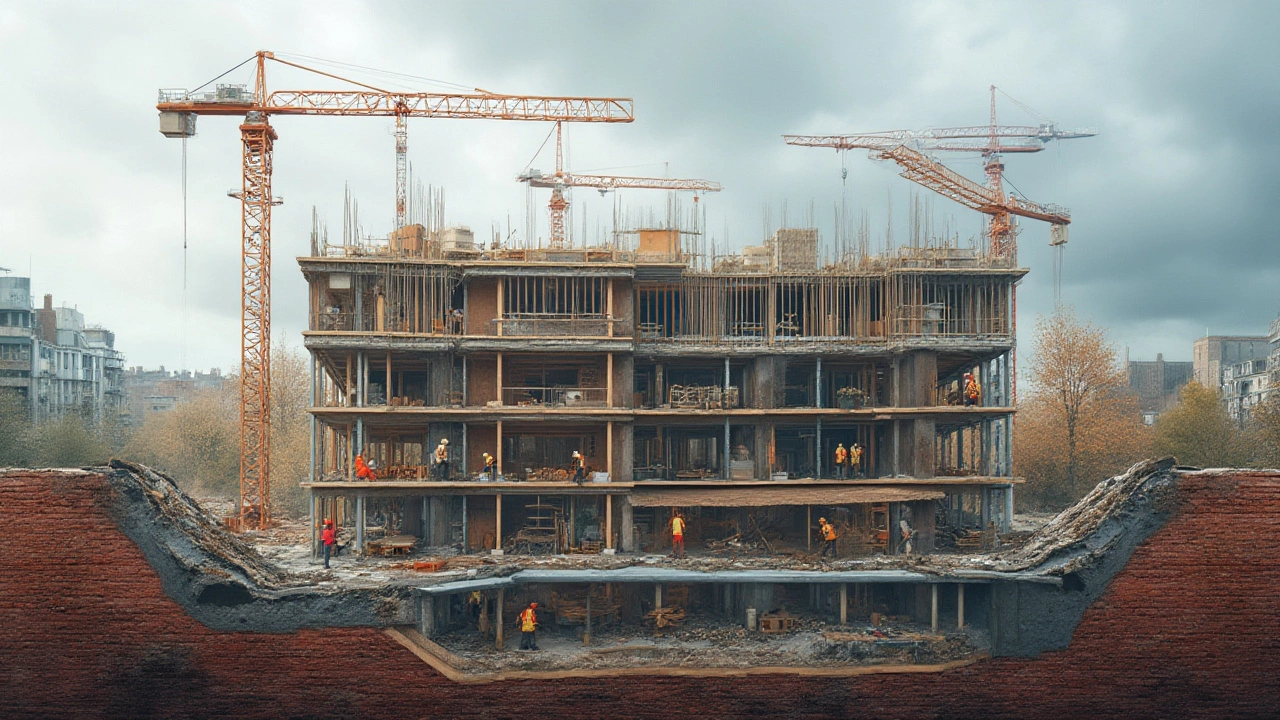Types of Construction Materials: What You Need to Know
If you’re planning a build, the first thing to decide is what the walls, floors and roof will be made of. The right material saves money, speeds up work and makes the building last longer. Below you’ll find the most common choices and when each one works best.
Concrete – The All‑Rounder
Concrete is the go‑to for foundations, slabs and streets. It’s cheap, strong and works everywhere, from a tiny garden shed to a skyscraper. Mix the right amount of water and cement, pour it into forms, and let it cure for a few days. For a smoother finish, add a plasticiser; for extra strength, use steel rebar inside the mix. Keep the surface damp while it sets, or you’ll get cracks.
Steel – The Strong Backbone
When you need a material that can handle heavy loads without getting bulky, steel is the answer. It’s perfect for frames, beams and columns in commercial buildings. Because steel is pre‑fabricated, you can assemble sections quickly on site. Watch out for rust – a good protective coating or galvanising will keep it solid for decades. If you’re building a house, a steel frame can cut construction time in half.
Wood is the third big player. It’s light, easy to cut and gives a warm look that concrete and steel can’t match. Softwoods like pine work well for internal walls and floors, while hardwoods such as oak are great for visible surfaces and staircases. Treat wood with preservative if it will be exposed to moisture, and always check for knots that could weaken it.
Beyond these three, you’ll see newer options entering the market. Engineered wood combines layers of timber and adhesives for extra strength, while cross‑linked polymer (CLP) boards give a waterproof, fire‑resistant alternative for bathrooms and kitchens. If sustainability matters, consider bamboo or reclaimed timber – they look good and lower your carbon footprint.
Choosing the right material starts with three questions: What load does it need to bear? How much exposure to water or weather will it have? And what budget are you working with? A concrete slab under a garage, steel columns for a shop front, and wood paneling for a living room often make the most sense when you answer these basics.
Installation tips can save you headaches. For concrete, use a vibrator to settle the mix and remove air pockets. With steel, double‑check all bolts and welds for alignment before loading the structure. When working with wood, let it acclimate to the room’s temperature and humidity for at least a week – this prevents warping later.
Maintenance is the final piece of the puzzle. Seal concrete floors every few years to guard against stains. Inspect steel frames for rust after heavy rain and touch‑up any scratches. Sand and refinish wood surfaces every few seasons to keep the grain looking fresh.
Bottom line: concrete gives you durability, steel gives you strength, and wood gives you warmth. Mix and match based on the specific needs of each part of your project, and you’ll end up with a building that looks good, works well, and lasts long.
Understanding Construction Materials: Types, Uses, and Essential Facts
- Gavin Whitaker
- |
- |
- 0
A deep dive into construction materials: what they are, types, uses, how to choose, and which are driving innovation in the building world right now.
View more